The straight paper path design ensures reliable feeding even with wrinkled or curved documents, regardless of their types and sizes.
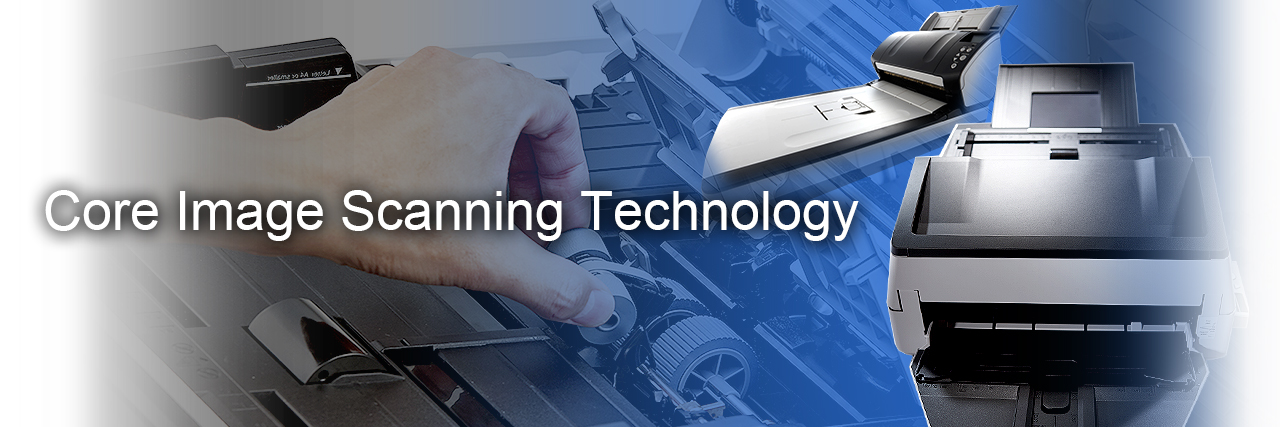
Reliability for Consistent Performance
Stable Paper Handling Prevents Documents From Being Damaged
Ricoh scanners are packed with a variety of core technologies to ensure that users can use the product with confidence. One of these is the ability to feed paper reliably. We are continually working to improve reliability to prevent damage users' valuable documents and avoid work interruptions.
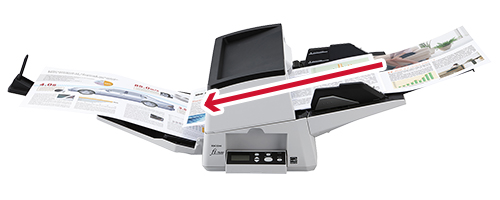
Brake Roller with Built-in Torque Limiter* Effectively Separates Pages
* Torque limiter: A mechanism that interrupts transmission of drive from the shaft to the roller when excessive force is present.
Academic Approach Overcomes the 200-Sheet Barrier
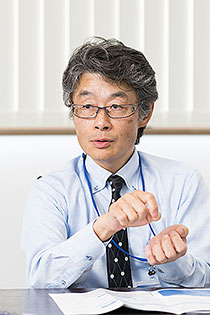
Shuichi Morikawa
at the Advanced Technology Department
Along with the pursuit of technical innovations aimed at improving paper feeding, the functions demanded of scanners have evolved with the times, posing significant technical obstacles for engineers to overcome.
Shuichi Morikawa, currently at our advanced technology department, found himself struggling with a difficult problem in the early 2000s when he was working on the development of paper feeding techniques. His difficulties came about from the need to significantly increase the number of sheets of paper that could be placed in a scanner at one time. The initial capacity when the image scanner was developed based on fax technology around 1986 was 50 sheets. Although that number had been gradually improved on, the development objective this time was for the scanner to be able to take 200 sheets at a time. “When I could not get the results I was looking for after trying all sorts of different methods,” explained Mr. Morikawa, "it seemed to me that the problem could not be resolved merely by extending existing technology. Despite this, giving up was not an option."
What he chose to do was to go down a more academic path. From around 2005, he embarked on joint research into paper feeding techniques with a professor at the local university. Together with a leading expert in tribology (the study of the various phenomena that occur between two surfaces that interact through mechanisms such as friction, wear, and lubrication), he investigated the relationship between sheets of paper and between paper and the rubber feed rollers. On the basis of this joint research with the university, we gradually started approaching paper feeding ability from a more academic perspective.
Whereas paper feeding ability had, up until that time, been designed on the basis of the Amonton-Coulomb law*, which is most commonly used, it became clear as the research progressed that this would be inadequate for the development of scanners that use elastic rubber rollers in the feed mechanism. What this meant was that the coefficient of friction, which up until that time had been assumed constant, in fact varied depending on factors such as the load and contact area. Accordingly, the theory behind the development was fundamentally revised and they set about establishing better techniques for paper supply and feeding, including consideration of how the coefficient of friction varied with the conditions and the development of their own measurement devices.
* Amonton-Coulomb law: Friction (contact surface resistance in the reverse direction of paper feed) is proportional to the applied load, with the coefficient of friction (friction force/load) remaining constant.
Repeat Testing until the Envisioned Theory is Reproduced
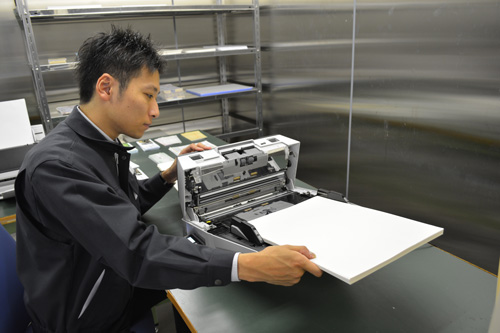
Testing is essential to the establishment of technologies for paper feeding. The key word in this exercise is "reproducibility". Paper characteristics include its shape, size, thickness, surface condition, and how it has been stored. Paper may also be dirty or wrinkled. The condition of the rubber rollers in the feed mechanism also varies significantly depending on the temperature, humidity, and so on. As the results obtained from the theoretically derived formulae are completely different with changes in any of these factors, it is critical to perform multiple tests that simulate practical usage in a range of environments, to ensure success in real-world conditions.
The engineers make a determined effort to perform testing under a number of usage scenarios and keep developing until the results match the theory. As Mr. Morikawa explains, when it comes to techniques for paper feeding, "There is much we still do not understand, even when we approach the subject academically," which is to say the field is one with considerable scope for future progress.
Easy to Use with Dependable Image Quality
The ultimate output of the image scanner is the images provided to the user. Even if the original is wrinkled or smudged, or contains background colors that make text hard to read, the image scanner still needs to reliably convert the document to image data and deliver a level of quality that meets the user’s requirements. High image quality is part of the value we promise to provide to customers.
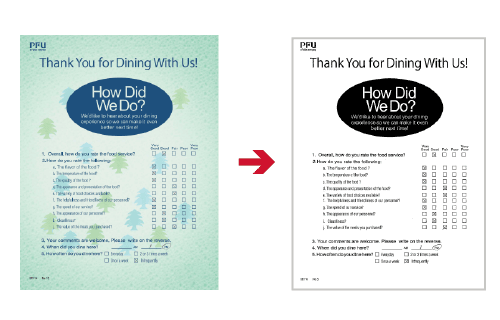
Sharp Images Delivered by a Compact Design
One of the core technologies that Ricoh has continued to improve is the CCD sensor used in the reduction optics for scanning the original document. Fulfilling the same role as the human eye, the CCD sensor is a semiconductor made up of small elements called pixels that detect light and convert it to an electrical signal.
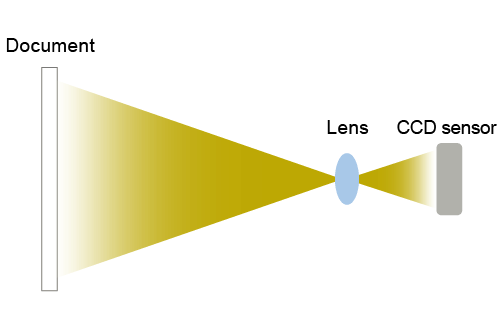
Optical System Proves to be a Rich Source of Innovation
An important factor in obtaining quality images in a compact design includes the lens itself. Instead of a conventionally shaped spherical lens, the lens built into the CCD sensor used in the optics is aspherical with a gently sloping profile. With a spherical lens, distortion increases towards the edges of the document with greater blurring and darkening. The use of an aspherical lens minimizes this distortion and allows a more compact design with a shorter distance to the document.
Our engineers also came up with a new approach to lighting. As variations in lighting between the center and edges occur invariably if the document is illuminated directly, uniform illumination of the document can be achieved by using indirect lighting in which the light is shone somewhere else and reflected onto the document.
Great Technology Necessary for Great Ideas to Take Shape
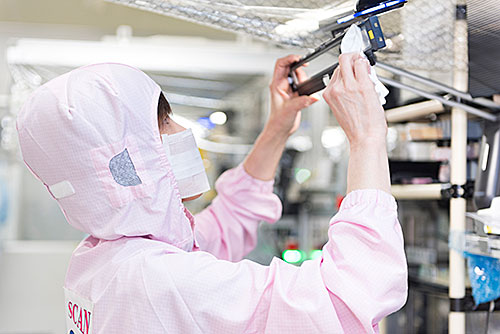
If the angle of the mirror becomes even slightly out of alignment during assembling, proper focusing will not occur. As the glass mirrors and plastic mountings are made of different materials, differences in factors such as degree of thermal contraction can also be a source of problems. Overcoming this problem requires technology that is underpinned by extensive experience.
Our skill in reduction optics design, honed over many years is the core technology that sets us apart from others.
Automatic “White” Adjustment to Maintain Consistent Image Quality across All Conditions
* Excluding fi-7030 and fi-65F
Attractive PaperStream IP Images that are Ready for Use
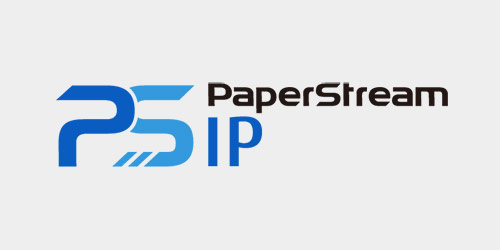
Once a clean and distortion-free image has been captured, what is the best way to provide it to the user in a form that is easy to use? We developed its own PaperStream IP scanner driver to automatically deliver optimal image processing results, and have included it in the fi Series scanners intended for business use since 2013. Work continues on making further developments and improvements from a customer perspective.
One example that demonstrates the high-level performance specifications of the driver is the generation of monochrome image data. Compared to color, text is easier to read on monochrome images and they use much less data, making monochrome suitable for applications such as scanning large numbers of documents. On the other hand, in contrast to color images in which red, green, and blue are each displayed in 256 gradations, monochrome represents white and black as either 0 or 1. While the data size is extremely small, a high level of technology is needed to find ways to deliver legible images.
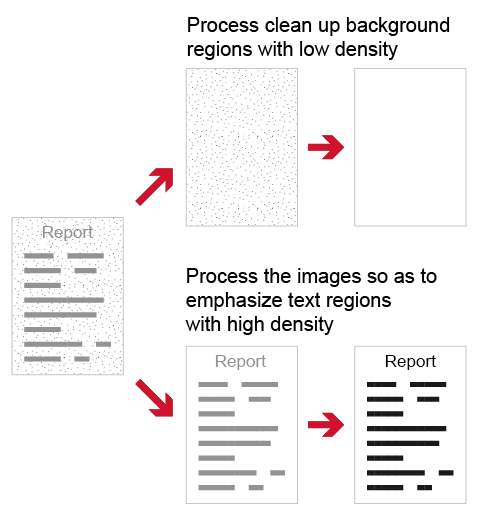
The engineers directed their attention to the fact that the information density of text is high whereas that of the background is low. They succeeded in producing highly legible monochrome images by processing the images so as to emphasize regions with high density while cleaning up regions with low density. This technique made it possible to use optical character recognition (OCR) to scan text in shaded regions, something that had been difficult to achieve in the past. They also incorporated a variety of proprietary techniques to dramatically improve OCR accuracy, including adjusting the line thickness of rough characters or eliminating things like wrinkles in the paper or background patterns.
PaperStream IP was subjected to rigorous usability assessments during development. A long two-year period was spent gathering feedback from customers and making improvements. A wide variety of functions were incorporated to make it simple for anyone to produce high-quality image data, including dialogs that can be used intuitively and an assisted scanning function that allows you to choose the best option from a range of different image processing results without having to make complex configuration changes.
